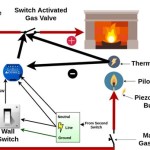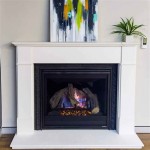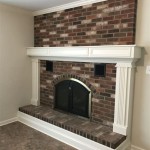Understanding and Maintaining Your Gas Fireplace Control Knob
The gas fireplace control knob is a critical component responsible for regulating the flow of gas to the burner, thereby controlling the size and intensity of the flames and, ultimately, the heat output. A properly functioning control knob is essential for safe and efficient operation. This article will explore the functionality of a gas fireplace control knob, common issues associated with it, and steps for troubleshooting and maintenance.
Gas fireplaces offer a convenient and aesthetically pleasing alternative to traditional wood-burning fireplaces. They provide instant heat, require minimal cleanup, and can be operated with ease using the control knob. The control knob typically allows for adjustments ranging from a pilot light setting to various levels of flame intensity. The knob’s design may vary depending on the fireplace model, but the core function remains the same: to modulate the gas supply.
Understanding the inner workings of a gas fireplace control knob is paramount for homeowners who rely on these appliances for warmth and ambiance. Familiarity with its operation can facilitate early detection of potential problems and enable proactive maintenance, contributing to safety and longevity of the system.
The functionality of the gas fireplace control knob is intricately linked to the gas valve assembly. When the knob is turned, it engages the gas valve, opening or closing passageways that allow gas to flow to the pilot light and the main burner. The control knob typically has distinct settings, including:
- OFF: This position completely shuts off the gas supply, preventing any flow to the pilot light or burner.
- PILOT: This setting allows a small amount of gas to flow to the pilot light, a small, constantly burning flame used to ignite the main burner.
- ON: This position allows gas to flow to both the pilot light and the main burner, enabling the fireplace to produce flames and generate heat. Often, the "ON" position is a range of settings where the flame height can be adjusted.
The knob's markings are crucial for proper operation. Attempting to force the knob beyond its designated positions can damage the valve assembly and potentially create a safety hazard. Always consult the manufacturer's instructions for specific details about the control knob's operation for a particular fireplace model.
Common Issues with Gas Fireplace Control Knobs
Several issues can arise with gas fireplace control knobs, affecting the fireplace's performance and safety. These problems often stem from wear and tear, dirt accumulation, or component failure. Recognizing these potential issues early can prevent further damage and potentially costly repairs.
One common problem is a stiff or difficult-to-turn knob. This can be caused by a buildup of dirt, grease, or corrosion within the gas valve assembly. Over time, these contaminants can impede the smooth movement of the internal components, making it hard to adjust the flame height or turn the fireplace on or off. Applying excessive force to a stiff knob can potentially damage the valve and lead to gas leaks.
Another issue is a knob that spins freely without engaging the gas valve. This usually indicates a broken or stripped connection between the knob and the valve stem. In such cases, turning the knob has no effect on the gas flow, rendering the fireplace unusable. This presents a safety concern because the gas flow might not be controllable.
A gas leak around the control knob is a serious safety hazard. It can be identified by a distinctive gas odor or by applying a soapy water solution to the area around the knob and observing for bubbles. If a leak is suspected, the gas supply should be immediately shut off at the main valve, and a qualified technician should be contacted for immediate repair.
Furthermore, the pilot light may fail to ignite or stay lit if the control knob is not functioning correctly. This could be due to a blockage in the pilot light orifice or a faulty thermocouple. While the control knob itself might not be directly responsible for the pilot light failure, it plays a crucial role in supplying the gas needed for ignition.
Finally, inconsistent flame height or flickering flames can also be an indicator of an issue with the gas flow regulation controlled by the knob. This might be caused by a partially obstructed gas valve or a problem with the pressure regulator. These problems can lead to inefficient heating and potentially dangerous carbon monoxide buildup.
Troubleshooting and Maintenance
Addressing issues with a gas fireplace control knob often involves a combination of troubleshooting and maintenance. While some tasks can be performed by homeowners, others require the expertise of a qualified gas fireplace technician. Prioritizing safety is paramount when working with gas appliances.
For a stiff or difficult-to-turn knob, the first step is often to attempt lubrication. A specialized gas valve lubricant, available at most hardware stores, can be applied to the knob and the valve stem. Follow the lubricant manufacturer's instructions carefully. Avoid using general-purpose lubricants, as they can damage the components of the gas valve. After applying the lubricant, gently turn the knob back and forth to distribute the lubricant and loosen any accumulated debris. If the knob remains stiff, further disassembly and cleaning of the valve might be necessary, which is best left to a professional.
If the knob spins freely without engaging the gas valve, the connection between the knob and the valve stem is likely broken. In many cases, the knob can be removed and inspected for damage, such as cracks or stripped threads. Replacement knobs are often available from the fireplace manufacturer or a reputable parts supplier. Ensure that the replacement knob is compatible with the specific fireplace model. If the valve stem is damaged, it requires professional attention and potentially the replacement of the entire gas valve assembly.
In case of a suspected gas leak, immediately shut off the gas supply at the main valve. Do not attempt to repair the leak yourself. Evacuate the premises and contact a qualified gas technician or the local gas company. Gas leaks are extremely dangerous and can lead to explosions or carbon monoxide poisoning. A professional technician will have the necessary tools and expertise to safely locate and repair the leak.
To prevent future issues, regular maintenance is essential. This includes cleaning the area around the control knob and the gas valve assembly with a soft brush or cloth to remove dust and debris. Periodically inspect the knob for any signs of damage or wear. Schedule annual inspections and servicing by a qualified gas fireplace technician to ensure that all components are functioning correctly and safely. The technician can also clean and lubricate the gas valve assembly, check for gas leaks, and inspect the venting system.
When performing any maintenance, always refer to the manufacturer's instructions for specific recommendations and precautions. Using the wrong tools or procedures can damage the fireplace and create safety hazards. Remember that gas appliances require careful handling and should only be serviced by qualified professionals when necessary.
Safety Precautions When Dealing with Gas Fireplace Control Knobs
Working with gas appliances demands strict adherence to safety protocols to prevent accidents and ensure the well-being of individuals and property. Specific precautions should be taken when dealing with gas fireplace control knobs, as they are integral to the appliance's safe operation.
First and foremost, always ensure that the gas supply is completely shut off at the main valve before attempting any maintenance or repairs on the control knob or gas valve assembly. This eliminates the risk of accidental gas leaks or explosions. Double-check that the knob is in the "OFF" position and that the gas supply is indeed cut off by verifying that the pilot light is extinguished and that there is no gas odor present.
Never use open flames or sparks near the gas fireplace, especially when working on the control knob or gas valve assembly. Gas is highly flammable, and even a small spark can ignite a dangerous explosion. Use a flashlight for illumination and avoid using electrical tools that could create sparks.
When lubricating the control knob or gas valve assembly, use only lubricants specifically designed for gas valves. Other lubricants can damage the valve components and potentially lead to gas leaks. Follow the lubricant manufacturer's instructions carefully and apply the lubricant sparingly.
If you suspect a gas leak, do not attempt to locate the leak yourself using matches or lighters. Instead, apply a soapy water solution to the area around the control knob and gas valve assembly. If bubbles form, this indicates a gas leak. In such cases, immediately shut off the gas supply, evacuate the premises, and contact a qualified gas technician or the local gas company.
Never tamper with the gas valve assembly or attempt to modify the control knob in any way. These components are precisely engineered to ensure safe and efficient operation. Altering them can compromise their integrity and create a safety hazard. If you are unsure about any aspect of the control knob or gas valve assembly, consult a qualified gas fireplace technician.
Ensure that the area around the gas fireplace is well-ventilated to prevent the buildup of carbon monoxide. Install a carbon monoxide detector in the vicinity of the fireplace and test it regularly to ensure that it is functioning correctly. Carbon monoxide is a colorless, odorless gas that can be deadly. Early detection is crucial for preventing carbon monoxide poisoning.
Regularly inspect the venting system of the gas fireplace to ensure that it is clear of obstructions. A blocked venting system can cause carbon monoxide to back up into the home. Schedule annual inspections and servicing by a qualified gas fireplace technician to ensure that the venting system is functioning correctly.
Always follow the manufacturer's instructions for operating and maintaining the gas fireplace. The instructions provide specific recommendations and precautions that are essential for safe and efficient operation. Keep the instructions readily available for reference.

Bear8 Com Lighting Gas Fireplaces

Bear8 Com Lighting Gas Fireplaces

Hpc Fire 111 Replacement Black Pilot Control Knob
My Gas Fireplace Pilot Light Works Perfectly However When I Flip The Switch For Rest Of To Turn On Nothing Happens What Quora

Gas Fireplace Control Knob Temu

How To Light A Gas Fireplace The Home Depot

How To Light The Pilot On A Gas Fireplace

How To Light Start A Gas Fireplace Using Real Example

Enviro Pilot Knob Extension All Millivolt Fireplaces 30 030 350 P217si 37d0010 571 534 910 373 Friendly Fires
Do We Need To Shut The Gas Off A Fireplace Before Replacing Wall Switch Quora
Related Posts








